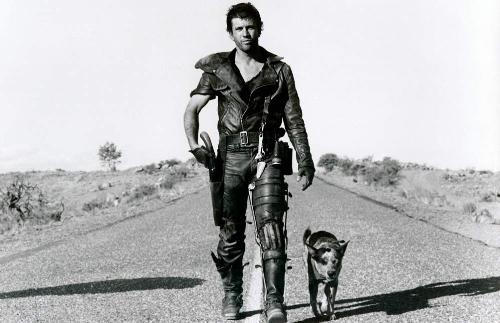Why!? What!? How!? Where!? For 100 astounding minutes the breakneck documentary Not Quite Hollywood mounts a staggering assault on your common sense. Tracing the rise and fall of Australian exploitation cinema from the early-70s to the late-80s, Mark Hartley’s breathless expose accelerates from one trashy revelation to the next in a film that features explosions, gore, breasts, blood, kung fu, BMX bikes, murderers in ice-cream vans, lesbian sex, devil worship, disco dancing, killer crocodiles, werewolves, car crashes, projectile vomiting – and US porn star John Holmes. This is a story in which Dennis Hopper being declared dead by alcohol poisoning isn’t even a big deal, a film that makes you wonder: why were these freaks allowed near a movie set? What the hell were they thinking? How on earth did they get away with it? And where, oh, where, can you see those insane movies?
Split into three parts, it begins with the self-explanatory Ockers, Knockers, Pubes And Tubes, in which the origins of the Australian sex comedy are explored. These films go way beyond bawdy, with the likes of Stork (1971), Alvin Purple (1973) and Felicity (1979). When Barry Humphries declares that “homophobia and racism can be charming, delightful, essential”, he’s only half-joking, and in the various vomit scenes shown, one can only marvel at his special recipe – a mix of corn soup, pea soup, fruit salad, potato salad and a couple of shreds of tomato.
There are comments here as to how and why the Oz film industry behaved in this way, mostly to do with censorship and cultural identity. Quentin Tarantino, an early convert, notes that most of these films didn’t get any attention even after the new wave of Australian cinema hit US cinemas in the late-70s. “The Aussie genre films weren’t being touted as Aussie films [in America],” he recalls. “I didn’t know they were Aussie genre films until I bought my ticket and [the actors] opened their mouths.” But with no time to dwell on them, Not Quite Hollywood is on to chapter two: Comatose Killers And Outback Chillers. This is where the blood spills and more female flesh is sliced and diced than in some of the most famously misogynistic Italian slashers of the period.
By now, the offscreen sagas are starting to creep in, notably on 1981’s Roadgames – Rear Window on a motorway! – which raised hackles by importing two US stars (Stacy Keach and Jamie Lee Curtis) and infuriated its producers with its ballooning schedule (after only five days filming, they were four days behind). This leads us nicely to the jaw-dropping finale, High-Octane Disasters And Kung Fu Masters, in which the making-of tales eclipse the spills onscreen. 1974 biker flick Stone makes Hunter S Thompson’s travels with the Hells Angels look like Michael Palin’s Pole To Pole; the insanity of Dennis Hopper on Philippe Mora’s Mad Dog Morgan (1976) is a cautionary tale of mixing method acting with rum and coke (the drug, not the drink); and in today’s anodyne age, isn’t it refreshing to hear Man From Hong Kong star Yu Wang described as “horrible”?
This is where Not Quite Hollywood really comes into its own. Even if you’ve heard horror stories from Bollywood, Nollywood, or any other ‘wood where health and safety issues aren’t high on the agenda, you still won’t believe what these guys were prepared to do in the name of entertainment. Live ammo, illegal car chases, setting fire to ageing Hollywood stars – the Oz film industry did it all, in a series of films that became wilder and weirder, culminating in the berserk survivalist shockers Turkey Shoot (1982) and Dead End Drive-In (1986). And in with these you’ll be surprised to find the original Mad Max (1979), a lurid drama that proved to be as lawless behind the camera as the post-apocalyptic future it depicted.
Though it draws an artificial line between the “proper” Australian cinema of the time and its bastard siblings – local hero Peter Weir crossed this divide before and after his milestone 1975 movie Picnic At Hanging Rock, with sci-fi/horror The Cars That Ate Paris (1974), re-edited for US release as The Cars That Eat People, and supernatural thriller The Last Wave (1977) – Not Quite Hollywood is still a refreshing reminder that a thriving B-movie culture is necessary for the survival of the mainstream. And while many of the names here will be unknown to most, there are some incredible moments of familiarity. Foremost is a clip from 1983 kids’ caper BMX Bandits and its freckly, frizzy-haired, buck-toothed teenage heroine: the one, the only, Nicole Mary Kidman.
The Guardian

